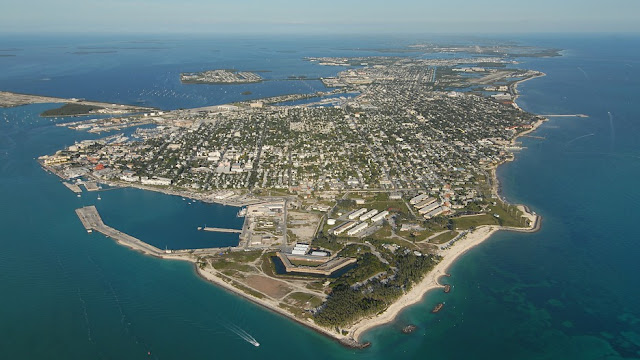
CAYO HUESO (KEY WEST), U.S.A., MUCHO MAS CERCA DE CUBA QUE MIAMI. PHOTOS.
Los Cayos de la Florida son un archipiélago de alrededor de 1700 islas pequeñas situado al sur de la costa de Florida, que comienzan alrededor de unas 15 millas al sur de Miami y se extienden unos 320 km en un arco con dirección sur-suroeste y luego hacia el oeste hasta Cayo Hueso (Key West), la última de las islas habitadas y que cuenta con más de la tercera parte de la población de los cayos. El extremo sur de Cayo Hueso (Key West) está a solamente a unos 151 km de Cuba, mucho más cerca que Miami.
HISTORIA DE CAYO HUESO
En la época precolombina Cayo Hueso fue habitada por el pueblo Calusa. El primer europeo en visitar fue Juan Ponce de León en 1521. Como Florida se convirtió en territorio español, un pueblo de pescadores y de rescate con una pequeña guarnición se estableció aquí.
Cayo Hueso es el nombre original en español de la isla de Cayo Hueso o Key West. Personas que hablan español hoy en día también usan el término Cayo Hueso al referirse a esta isla. Se dice que la isla estaba llena de restos (huesos) y que la isla era la llave occidental con un suministro seguro de agua.
En 1890, Cayo Hueso tenía una población de cerca de mas de 18,000 y era la ciudad más grande y rica en la Florida. La mitad de los residentes se decía que eran de origen cubano, y Cayo Hueso regularmente tenían alcaldes cubanos, entre ellos el hijo de Carlos Manuel de Céspedes, el padre de la República de Cuba, que fue elegido alcalde en 1876. Los cubanos han participado activamente en el desarrollo de 200 fábricas en la ciudad, una producción de 100 millones de cigarros anuales. José Martí hizo varias visitas a buscar reclutas para la independencia de Cuba a partir de 1891 y fundó el Partido Revolucionario Cubano en sus visitas a Cayo Hueso.
Se estima que durante los tiempos coloniales españoles, antes de 1763, en Cayo Hueso existió al menos un poblado para auxiliar con el rescate de las naves que naufragaban en el Estrecho de la Florida, también residiendo allí algunos pescadores. Aparentemente Cayo Hueso era considerado parte legal de la Florida ya que al ceder España la península a Inglaterra, para terminar la ocupación de La Habana por los Ingleses, Cayo Hueso fue considerado cedido, siendo los residentes del poblado en el Cayo trasladados a La Habana.
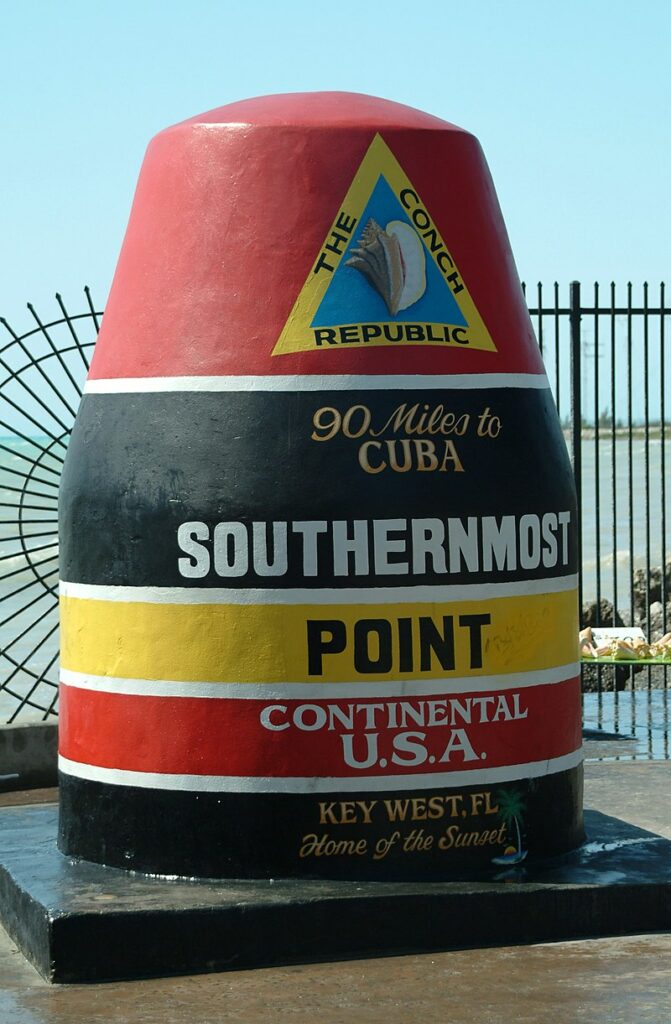
COMIENZO DE LA POBLACION AMERICANA
Inglaterra no le hizo mucho caso a Cayo Hueso y pronto el Cayo empezó a ser usado por pescadores cubanos y de las Bahamas. Tan pronto los Estados Unidos logró su independencia comenzaron a llegar hasta el Cayo algunas personas de la nueva nación. Durante estos años ningún gobierno ejerció control ni reconocimiento sobre Cayo Hueso.
En 1815 el gobernador español de Cuba en La Habana traspasó la isla de Cayo Hueso a Juan Pablo Salas, un oficial de la Artillería Real Armada Española, radicado en Saint Augustine, Florida. Después de la Florida se trasladó a los Estados Unidos, Salas estaba tan ansioso por vender la isla, que la vendió dos veces.
Por orden del 7 de febrero de 1822, el 25 de marzo de 1822 el teniente Matthew C. Perry de la marina americana llegó a Cayo Hueso en el Shark (Tiburón) y plantó la bandera americana reclamando al cayo como propiedad de los Estados Unidos. Perry procedió a cambiarle el nombre a “Thompson’s Island” en honor al secretario de la marina Smith Thompson y al puerto le llamó “Port Rodgers” en honor a John Rodgers, héroe de la guerra de 1812. Ninguno de los dos nombres permanecieron, sin embargo, Cayo Hueso ha permanecido propiedad de los Estados Unidos hasta el presente.
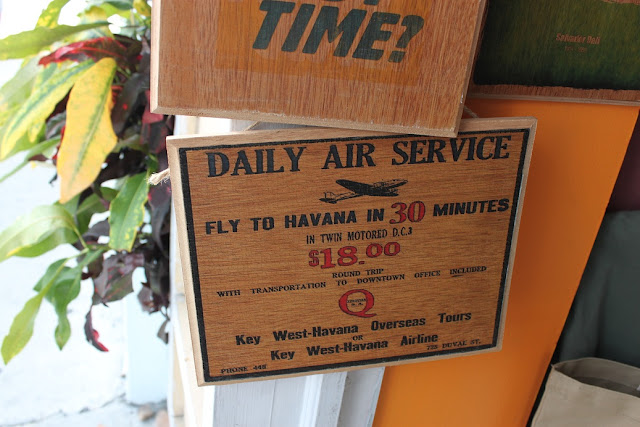
KEY WEST, (CAYO HUESO) U.S.A., MUCH CLOSER TO CUBA THAN MIAMI. PHOTOS.
The Florida Keys are an archipelago of about 1,700 small islands located south of the coast of Florida, beginning about 15 miles south of Miami and extending about 200 miles in an arc south-southwest and then west to Key West, the last of the inhabited islands and home to more than a third of the Keys’ population. The southern tip of Key West is only about 95 miles from Cuba, much closer than Miami.
HISTORY OF KEY WEST
In pre-Columbian times, Key West was inhabited by the Calusa people. The first European to visit was Juan Ponce de Leon in 1521. As Florida became Spanish territory, a fishing and salvage village with a small garrison was established here.
Cayo Hueso is the original Spanish name for the island of Cayo Hueso or Key West. Spanish speakers today also use the term Cayo Hueso when referring to this island. It is said that the island was full of remains (bones) and that the island was the western key with a secure water supply.
In 1890, Cayo Hueso had a population of about 18,000 and was the largest and wealthiest city in Florida. Half of the residents were said to be of Cuban origin, and Key West regularly had Cuban mayors, including the son of Carlos Manuel de Céspedes, the father of the Cuban Republic, who was elected mayor in 1876. Cubans have been active in the development of 200 factories in the city, producing 100 million cigars annually. José Martí made several visits to recruit for Cuban independence beginning in 1891 and founded the Cuban Revolutionary Party on his visits to Key West.
It is estimated that during Spanish colonial times, before 1763, there was at least one town in Key West to assist with the rescue of ships that sank in the Straits of Florida, with some fishermen also residing there. Apparently Key West was considered a legal part of Florida since when Spain ceded the peninsula to England, to end the occupation of Havana by the English, Key West was considered ceded, and the residents of the town on the Key were moved to Havana.
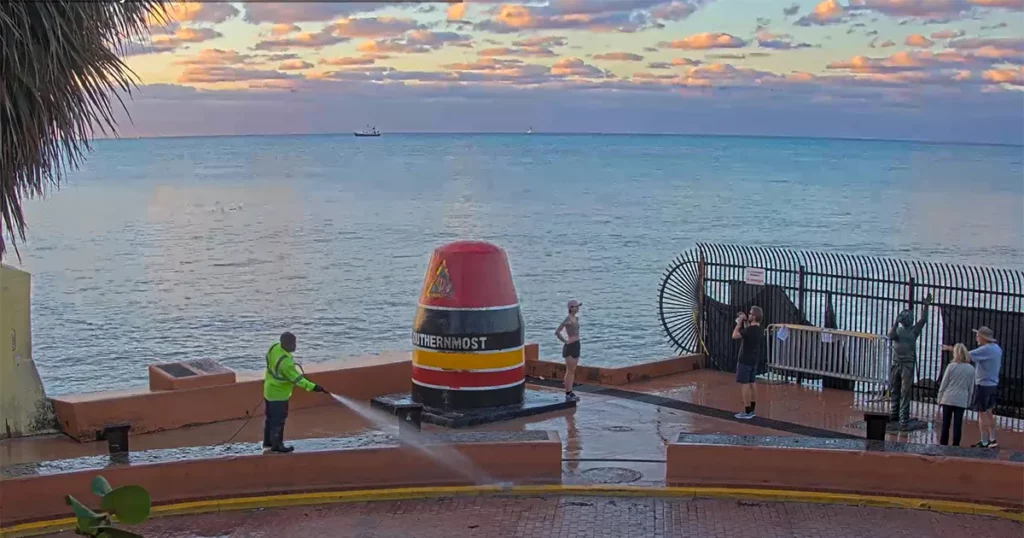
BEGINNING OF AMERICAN POPULATION
England did not pay much attention to Key West and soon the Key began to be used by Cuban and Bahamian fishermen. As soon as the United States achieved its independence, some people from the new nation began to arrive on the Key. During these years no government exercised control or recognition over Key West.
In 1815 the Spanish governor of Cuba in Havana transferred the island of Key West to Juan Pablo Salas, an officer of the Spanish Royal Artillery, based in Saint Augustine, Florida. After Florida was moved to the United States, Salas was so eager to sell the island that he sold it twice.
By order of February 7, 1822, on March 25, 1822, Lieutenant Matthew C. Perry of the U.S. Navy arrived at Key West in the Shark and planted the American flag, claiming the key as United States property. Perry proceeded to rename the key “Thompson’s Island” in honor of Secretary of the Navy Smith Thompson and named the harbor “Port Rodgers” in honor of John Rodgers, a hero of the War of 1812. Neither name stuck, however, and Key West has remained United States property to the present.
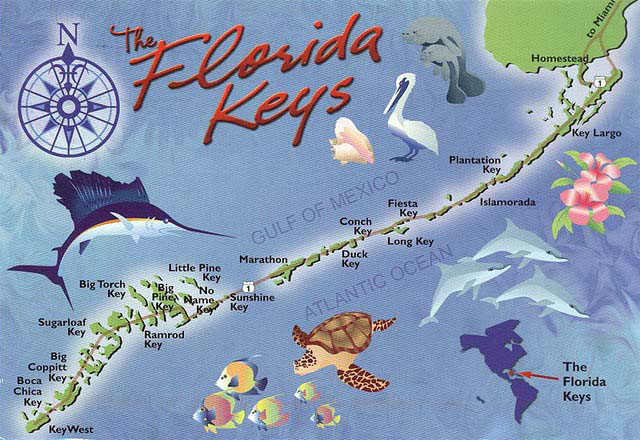
Agencies/ Wiki/ NostalgiaCubana/ Carlos Rodriguez Bua/ Extractos/ Excerpts/ Internet Photos/ Arnoldo Varona/ www.TheCubanHistory.com
THE CUBAN HISTORY, HOLLYWOOD.




 CAYO HUESO (KEY WEST), U.S.A., MUCHO MAS CERCA DE CUBA QUE MIAMI. PHOTOS.* KEY WEST, (CAYO HUESO) U.S.A., much Closer to Cuba than Miami. PHOTOS.
CAYO HUESO (KEY WEST), U.S.A., MUCHO MAS CERCA DE CUBA QUE MIAMI. PHOTOS.* KEY WEST, (CAYO HUESO) U.S.A., much Closer to Cuba than Miami. PHOTOS.